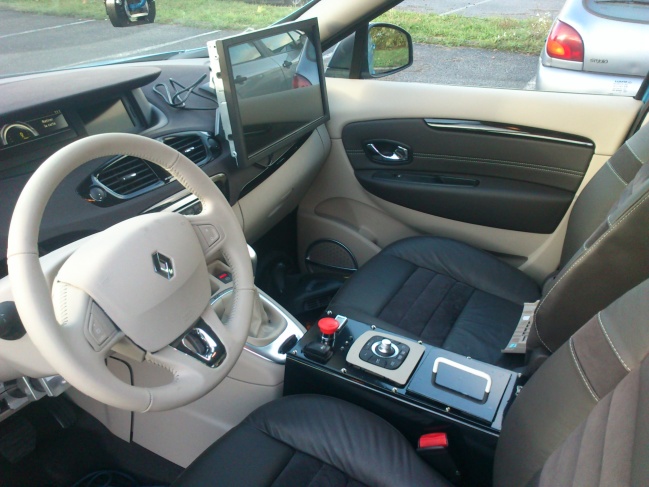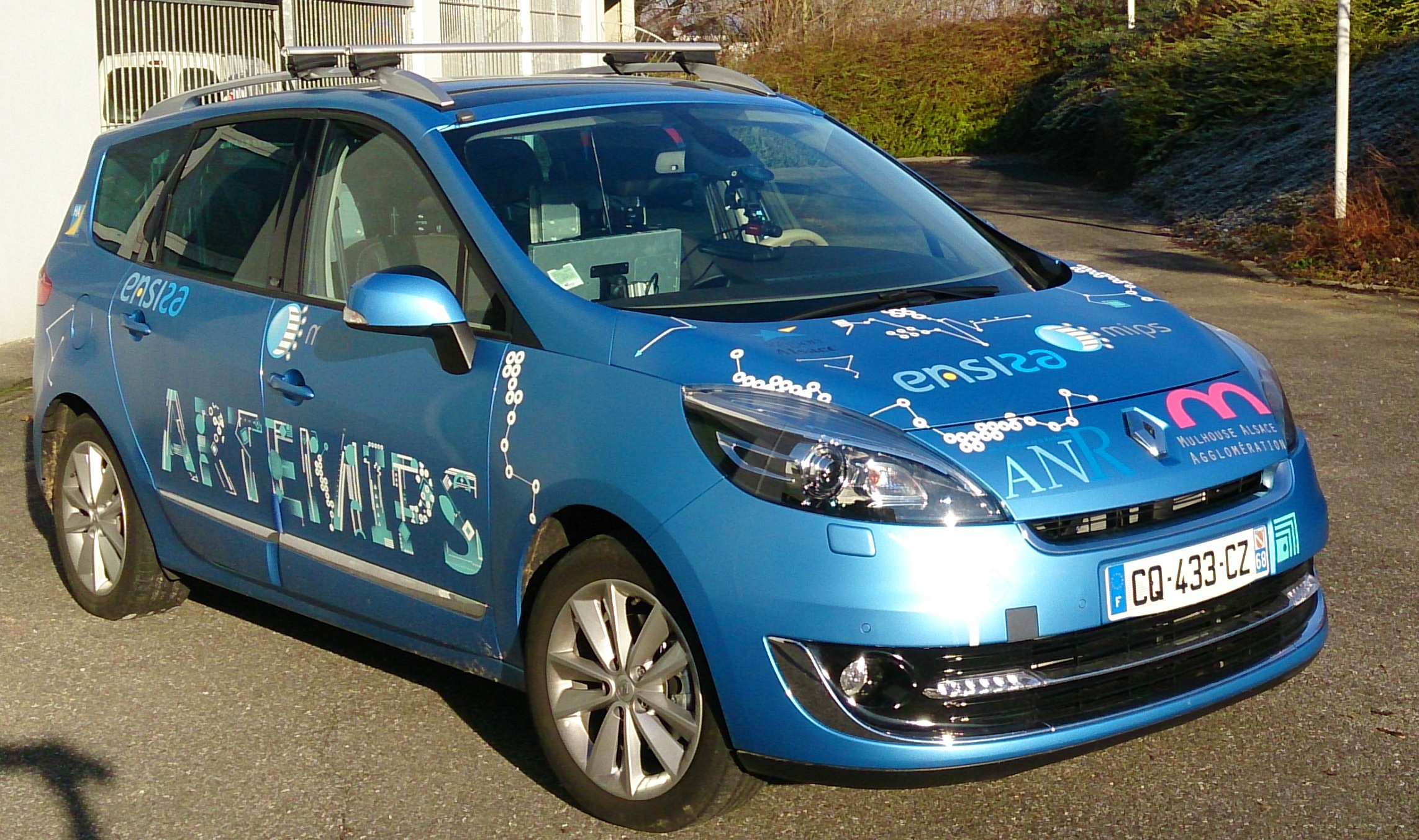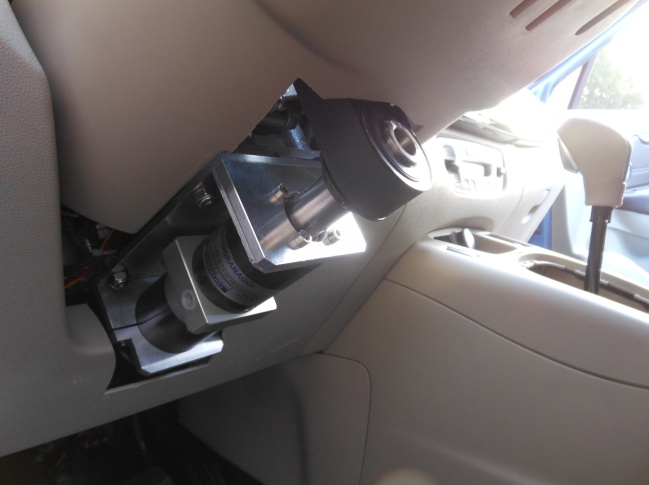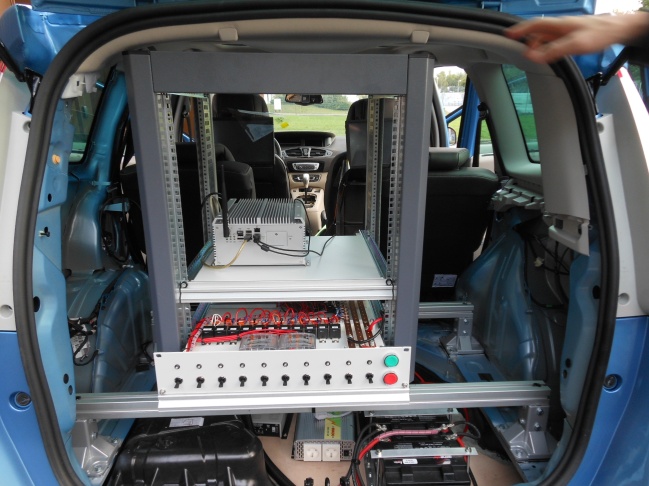| Le 03-07-2025 |

  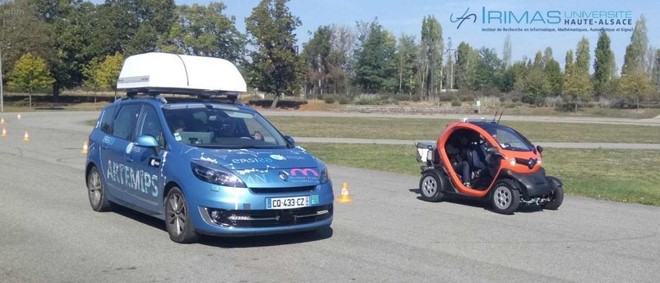 
|
The MIAM Team Testing MeansThe MIAM team possesses different testing means which help to validate its developments. Watch video on France 3 (in french): Test car prototypes currently usedARTEMIPS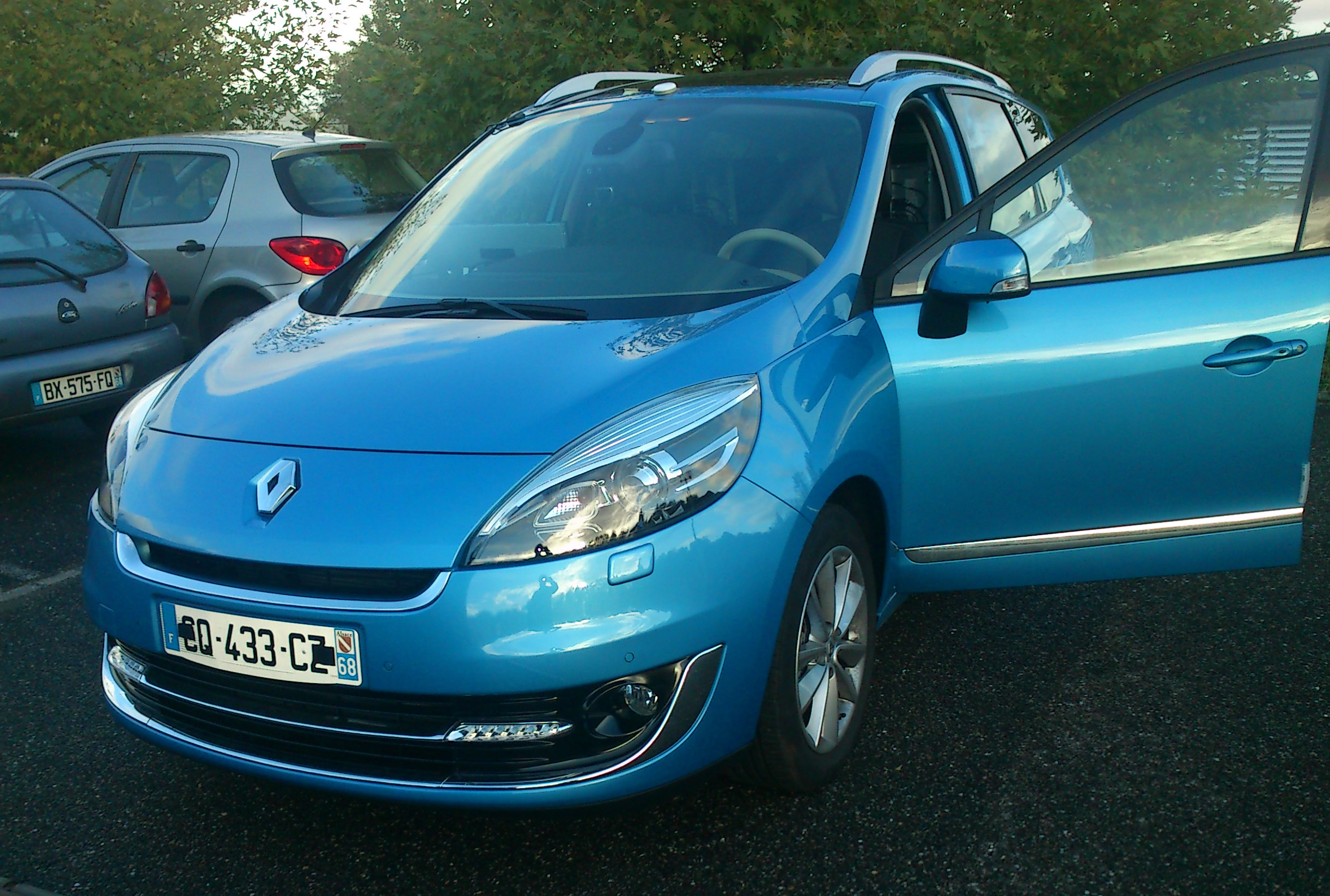 This is laboratory's new test vehicle. As NADINE, it is dedicated to the validation of the concepts developed for Advanced Driver Assistance Systems (ADAS). Paint by www.murmurevisuel.com.
NADINE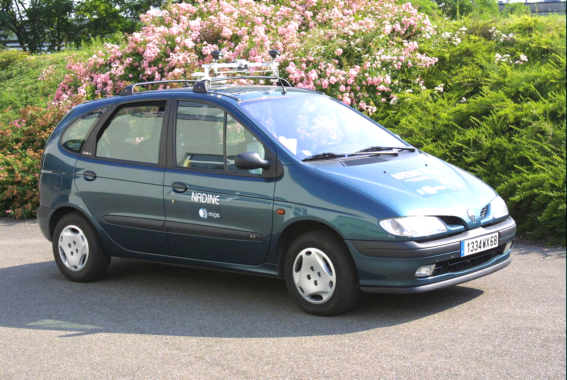 This vehicle is dedicated to the validation of the concepts developed for Advanced Driver Assistance Systems (ADAS). This includes trajectory generation, control systems and data fusion tests.
Download movie : Nadine_Lumino_Studio.mp4 CAMIL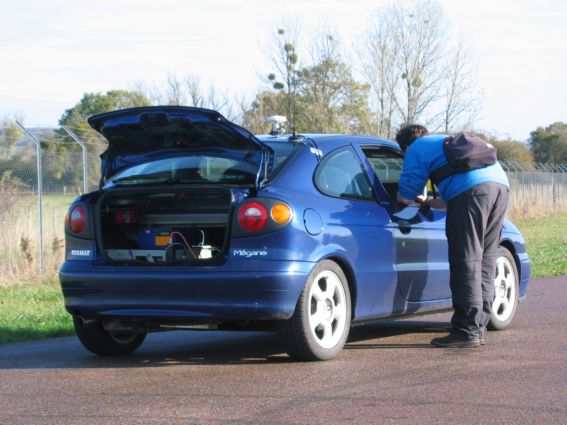 This test car is specially dedicated to the vehicle dynamics and driver behavior study. Recent studies are done over the tire slip angle measurement and the driver eye tracking. Eye TrackingThe eye tracking or "oculometry" is an analyzing tool which help to determine the location of someone's gaze. This information can be used to study the people behavior or for the control of a system. The MIPS laboratory is currently developing a model with contact: the system is hold by the used so that he can be mobile without perturbing the system. Currently used test benchesSemi-vehicle vertical dynamics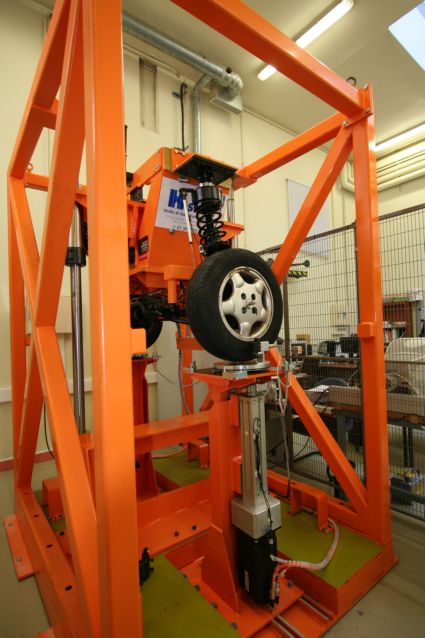 This test bench objectives are multiples and should allow the validation of a MIPS-MIAM laboratory developments set. Particularly, this bench helps to test the concepts before the experimentations with one of the test car. These concepts are:
This bench is focused on the tire-suspension-steering subset with solicitations applied to:
Steering Motor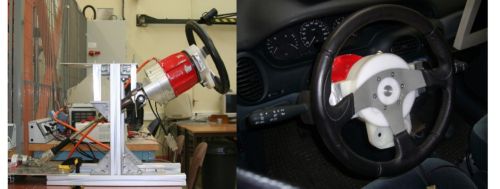 This motor helps to control the vehicle lateral behavior automatically. It possesses the following characteristics:
The steering angle, but also the torque can be measured thanks to an integrated torque-meter which replace the vehicle engine mechanics. This system directly coupled to the steering column avoids the use of common steering systems (sprocket, chain, belt, ...) for safety, space and maintenance reasons. In addition to lateral vehicle control tests, this motor allows testing safety strategies for steer-by-wire systems. | ||||||

